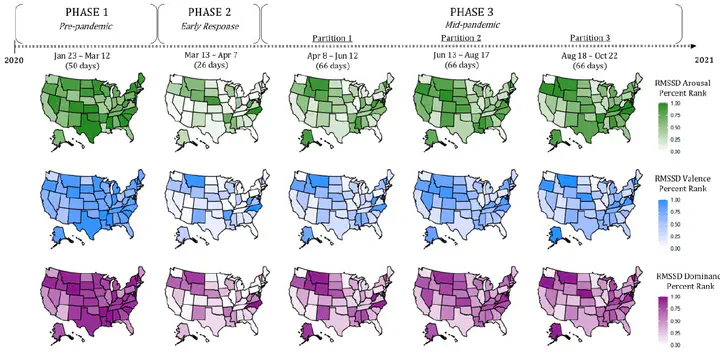Using the COVID-19 pandemic to assess the influence of news affect on online mental health-related search behavior across the United States: Integrated sentiment analysis and the circumplex model of affect

Abstract
Background: The digital era has ushered in an unprecedented volume of readily accessible information, including news coverage of current events. Research has shown that the sentiment of news articles can evoke emotional responses from readers on a daily basis with specific evidence for increased anxiety and depression in response to coverage of the recent COVID-19 pandemic. Given the primacy and relevance of such information exposure, its daily impact on the mental health of the general population within this modality warrants further nuanced investigation.
Objective: Using the COVID-19 pandemic as a subject-specific example, this work aimed to profile and examine associations between the dynamics of semantic affect in online local news headlines and same-day online mental health term search behavior over time across the United States.
Methods: Using COVID-19–related news headlines from a database of online news stories in conjunction with mental health–related online search data from Google Trends, this paper first explored the statistical and qualitative affective properties of state-specific COVID-19 news coverage across the United States from January 23, 2020, to October 22, 2020. The resultant operationalizations and findings from the joint application of dictionary-based sentiment analysis and the circumplex theory of affect informed the construction of subsequent hypothesis-driven mixed effects models. Daily state-specific counts of mental health search queries were regressed on circumplex-derived features of semantic affect, time, and state (as a random effect) to model the associations between the dynamics of news affect and search behavior throughout the pandemic. Search terms were also grouped into depression symptoms, anxiety symptoms, and nonspecific depression and anxiety symptoms to model the broad impact of news coverage on mental health.
Results: Exploratory efforts revealed patterns in day-to-day news headline affect variation across the first 9 months of the pandemic. In addition, circumplex mapping of the most frequently used words in state-specific headlines uncovered time-agnostic similarities and differences across the United States, including the ubiquitous use of negatively valenced and strongly arousing language. Subsequent mixed effects modeling implicated increased consistency in affective tone (SpinVA β=–.207; P<.001) as predictive of increased depression-related search term activity, with emotional language patterns indicative of affective uncontrollability (FluxA β=.221; P<.001) contributing generally to an increase in online mental health search term frequency.
Conclusions: This study demonstrated promise in applying the circumplex model of affect to written content and provided a practical example for how circumplex theory can be integrated with sentiment analysis techniques to interrogate mental health–related associations. The findings from pandemic-specific news headlines highlighted arousal, flux, and spin as potentially significant affect-based foci for further study. Future efforts may also benefit from more expansive sentiment analysis approaches to more broadly test the practical application and theoretical capabilities of the circumplex model of affect on text-based data.